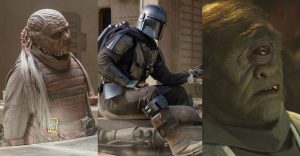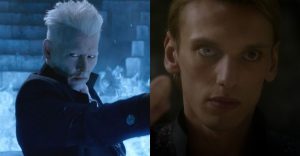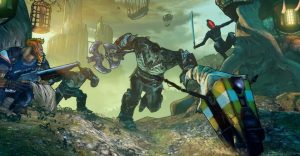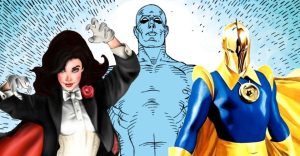Doctor Who: Every Actor Who Has Played The Master

Which actors have portrayed The Master in Doctor Who? Alongside the Daleks and Cybermen, The Master makes up Doctor Who‘s unholy trinity of despicable villains. Where most Doctor Who antagonists are monstrous aliens who only seek to invade, kill and assimilate, The Master is a complex figure, more akin to The Doctor than either would care to admit. Like The Doctor, The Master is a highly intelligent and talented Time Lord who broke free from Gallifrey’s rigid authority, but while The Doctor disagreed with the Time Lords not using their technology to help people and explore the universe, The Master disagreed with their refusal to become conquerors.
The Master spends his days flitting from one unethical scheme to the next, employing shadowy tactics, disguises worthy of Clark Kent, and wicked cunning, rather than the brute force of Daleks or Sontarans. For constantly thwarting his plans, The Master has developed a burning hatred of The Doctor, and seeks to kill his opposing number at any given opportunity. But The Master’s morality is as tangled and contradictory as the Doctor Who timeline itself, and he has, very occasionally, worked hand-in-hand with The Doctor when their purposes align.
Just as the role of The Doctor has been passed down from one actor to the next, so too has The Master continuously changed faces. More often than not, The Master regenerates off-screen, then surprises his nemesis (as well as viewers) with a brand new appearance. Here’s every Master actor in live-action, and the most important details about each incarnation.
Roger Delgado

The original, you might say. Jon Pertwee’s Doctor Who years were defined by a grounded approach, with the titular Time Lord beginning his third regeneration stranded on Earth. Producers decided that the exiled Doctor would require a nemesis – an equal and opposite foe comparable to Moriarty from Sherlock Holmes. Thus, The Master was created, and Roger Delgado was the first in a long legacy of actors cast. Unlike The Doctor, who has developed gradually with each regeneration, Delgado’s Master establishes each of the villain’s most important qualities from the off, laying a foundation the remains largely unaltered to this day. The suave and sinister exterior, the inner insanity, the egotistical drive for power, and the arrogant urge to prove his superiority were all established in Delgado’s early appearances. The first Master also relied heavily on his Tissue Compression Eliminator weapon, which would turn foes into small figurines (keep the packaging, they’ll be worth something one day.)
After debuting in “Terror of the Autons,” this first incarnation of The Master launched numerous madcap schemes for world domination, only to be denied each time by the Third Doctor. Sadly, Delgado passed away in 1973, leaving “Frontier in Space” as his final appearance. Roger Delgado retains iconic status among Doctor Who fans, and without his contribution, The Master simply wouldn’t exist in the form everyone knows and loves today.
Norman Stanley

Often overlooked, Roger Delgado wasn’t the only actor to portray The Master during the Third Doctor’s era – Norman Stanley did too, albeit only briefly. In “Terror of the Autons,” The Master is using plastic-inhabiting Autons to take over Earth, and plots to strangle The Doctor using a plastic telephone wire (were landlines always this dangerous?). Sneaking into UNIT HQ to switch the wires, The Master disguises himself as a telephone engineer, and Norman Stanley was the chosen actor for the job, playing a soon-to-be infamous villain for a single scene.
Peter Pratt

Following the death of Roger Delgado, The Master would next resurface in “The Deadly Assassin,” troubling Tom Baker’s Fourth Doctor on Gallifrey. According to this episode, The Master had been discovered on a remote planet by the high-ranking Time Lord Goth. Dying and out of regenerations, Goth cut a deal with The Master, soliciting the villain’s help to seize power on Gallifrey. Naturally, The Master had plans of his own, and sought to destroy his home planet, earning a new cycle of regenerations in the process. Since this Master was in the throes of death, technically speaking, he appeared as a cloaked, decaying monster, but the man underneath was Peter Pratt. There’s no change in persona from Delgado’s Master, leaving Pratt no opportunity to leave his mark on the character, but “The Deadly Assassin” itself was generally well-received.
Geoffrey Beevers

The zombified Master clocked up a second Doctor Who credit in “The Keeper of Traken,” but this time Geoffrey Beevers donned the cloak. In this Fourth Doctor story, The Master’s grotesque appearance was adapted somewhat, replacing the mask from “The Deadly Assassin” with make-up. Beevers’ Master mostly remained hidden inside his TARDIS, which took the form of a stone statue worshiped by the people of Traken and known as Melkur. See what happens when your chameleon circuit works? The still-dying Master planned to use Traken’s powerful technology to steal The Doctor’s body, cheating death once again. Although The Doctor survived the ordeal, The Master hid in his TARDIS and took the unsuspecting Tremas (see what they did there?) as his new physical form instead. Geoffrey Beevers was afforded more action than Pratt, and while his performance is a solid continuation of what Roger Delgado did (with flakier skin and and a less snappy wardrobe), it doesn’t necessarily stand out among the more nuanced Master iterations in Doctor Who.
Anthony Ainley

The second proper Master in Doctor Who, Anthony Ainley played Tremas in “The Keeper of Traken,” then took over as The Master from the end of the Fourth Doctor’s tenure until the show’s cancellation in 1989, battling an impressive total of 4 different Doctors. Ainley’s Master performance was deliberately close to Roger Delgado’s, although the sinister edge that made the original Master so intimidating in his early appearances was replaced by a more theatrical note. Where Delgado dealt in cool, calm menace, Ainley plumped for maniacal laughter and overblown posturing, although this is perhaps indicative of Doctor Who‘s 1980s direction in general. Between the events of Ainley’s final TV credit in “Survival” and the Doctor Who movie in 1996, the evil Time Lord was captured and executed by Daleks, meaning Ainley wouldn’t return to The Master in canon media. He did, however, feature in the 1990s multi-Doctor video game Destiny of the Doctors, filming special live-action cut scenes for the PC release.
Appearing in 11 TV stories, Anthony Ainley is one of the most prolific Masters in Doctor Who history, and fondly remembered for bringing The Doctor’s nemesis back to prominence after a period languishing as a faceless ghoul, devoid of the personality and charm he was known for. Ainley’s master was an undoubted highlight in a period of Doctor Who decline, but still couldn’t quite capture the magic of Roger Delgado.
Gordon Tipple

The most fleeting of Doctor Who Masters, Gordon Tipple appears in the 1996 movie, although his face and lines didn’t find their way into the finished cut. Tipple plays The Master prior to his execution, told through flashbacks and The Doctor’s narration. The actor has made other appearances in The X-Files and Time Runner.
Eric Roberts

After a quick Tipple, it’s Eric Roberts who takes the reins as Doctor Who‘s new Master for the remainder of Paul McGann’s movie adventure. The Hollywood star was already famous for Runaway Train and numerous other titles, and his casting signaled Doctor Who‘s intention to break the big time. The Master had always been fond of an over-complicated plan, but Eric Roberts’ schemes defied plausibility, with The Doctor’s favorite enemy cheating death yet again by transforming into a snake, smuggling a ride to Earth, and inhabiting the body of a poor ambulance driver called Bruce. Like the movie as a whole, Eric Roberts’ Master tries far too hard, coming across as campy and generic, and failing to convey the gravity of Delgado and Ainley. There’s too much “Hollywood villain” with the pale skin and the snake, and not enough of The Master’s established DNA in Roberts’ performance, although whether that’s the actor’s fault or a byproduct of an ill-conceived movie reboot is a matter of debate.
Derek Jacobi

With a new showrunner in Russell T. Davies and a new Doctor in David Tennant, the reborn Doctor Who spent an entire season hinting towards the appearance of more Time Lords, and so it proved in “Utopia.” Set on the planet of Malcrassairo in the far future, the Tenth Doctor is delighted to hit it off with like-minded scientist Professor Yana. Unfortunately, Yana is The Master is disguise, using a Chameleon Arch to secrete the essence of the real Master inside a Gallifreyan pocket watch. The compelling desire to open the watch proves too strong to resist, and for a brief minute, Derek Jacobi is The Master, but he’s quickly shot by his betrayed assistant, triggering a regeneration. Jacobi’s short time as The Master yields much unfulfilled promise, and the actor reprises his Doctor Who role in the Big Finish audios, adding more color to his villainous persona.
John Simm

The responsibility of playing the first modern Master proper fell to John Simm, who took the unparalleled cunning of Delgado with the theatrical qualities of Ainley, and tossed in a heavy helping of new-Who kooky mayhem to create a Master for the millennial audience. Under the guise of Harold Saxon, Simm’s Master conquers Earth and enslaves The Doctor, before being resurrected via his ex-wife and manipulated by Rassilon. More than ever before, Simm’s performance highlighted the parallels between Master and Doctor, playing up their shared heritage and diametrically opposed paths, before finally uniting the rebellious duo against the Time Lords in “The End of Time.” Simm’s most recent credit came during the Twelfth Doctor’s era in a first-of-its-kind multi-Master story alongside Michelle Gomez, in which the cause of Simm’s regeneration would be revealed as… himself.
John Simm’s Master was rapturously received upon his debut. Retrospective opinion has questioned whether his interpretation strayed too far into zany territory, pumping house music out of his ship and so forth, but Simm helped craft a Master who challenged Tennant in ways no pairing in the classic series had. The performance allows for a modicum of sympathy, but never excuses The Master or diminishes the aura of unpredictability Simm’s villain became known for.
William Hughes

With John Simm, Doctor Who explored The Master’s backstory, revealed that the incessant sound of drums had been implanted into his head by the Time Lords, driving the boy to madness from a young age. A young Master is seen as a student of Gallifrey, and is played by William Hughes. Predominantly known for his boxing career, Hughes tragically died in 2018.
Michelle Gomez

When the mysterious Missy began plotting against Peter Capaldi’s Twelfth Doctor, it didn’t take long for fans to guess the Master might’ve switched genders. Making her bow in “Deep Breath,” Missy represents the most revolutionary version of The Master in Doctor Who history. And with a macabre sense of humor and an unhinged love of dramatics, Missy was a far cry from Roger Delgado, even if her goals of world domination and The Doctor’s demise remained intact. Changing The Master’s personality proved a masterstroke, and suited Gomez’s comedic nous from Green Wing and Bad Education. Missy would maintain a constant presence throughout Peter Capaldi’s time in the TARDIS, and revealed a whole new shade to the decades-old character – empathy. After initially appearing as an antagonist, Missy shows glimmers of redemption at The Doctor’s side, and their bond is one of the more affecting additions Steven Moffat made to Doctor Who.
Gomez proved popular with fans too; her refreshing twist on an old classic pleasing audiences across the generational spectrum. Missy was just as deranged as her predecessors, but her capacity to evolve proved there was more to The Master than poorly thought-out invasion attempts and shrinking people. Missy chose not regenerate in “The Doctor Falls” but, true to form, she couldn’t even execute that plan successfully.
Sacha Dhawan

The current Master, played by Sacha Dhawan, goes back to the character’s roots, but with everything turned to eleven. Introduced as The Master to Jodie Whittaker’s Doctor in “Spyfall,” the relentlessly persistent Time Lord has resumed his evil ways, once again hellbent on conquering the universe so he can gloat about it to The Doctor afterwards. In a divisive season 12, Sacha Dhawan was one of the few elements Doctor Who fans unanimously praised, evoking the quieter darkness of classic Masters alongside the unpredictable childishness of Simm and Gomez. Far from merely a “Master Greatest Hits,” however, Dhawan injects a terrifying menace into his Master – a seething and deadly serious rage that contrasts nicely with his jauntier moments. He also brought the Tissue Compression Eliminator back into fashion.
With only a single season under his belt, Dhawan has time yet to leave his mark on Doctor Who, and there’s certainly much more to come from his devilishly layered portrayal of The Master. With the Timeless Child retcon now in play, a whole new facet of the Doctor-Master dynamic has emerged, and Dhawan is the perfect actor to balance a curiosity to understand his foe’s hidden past with an unbridled anger about having The Doctor’s DNA in his veins.
About The Author


















